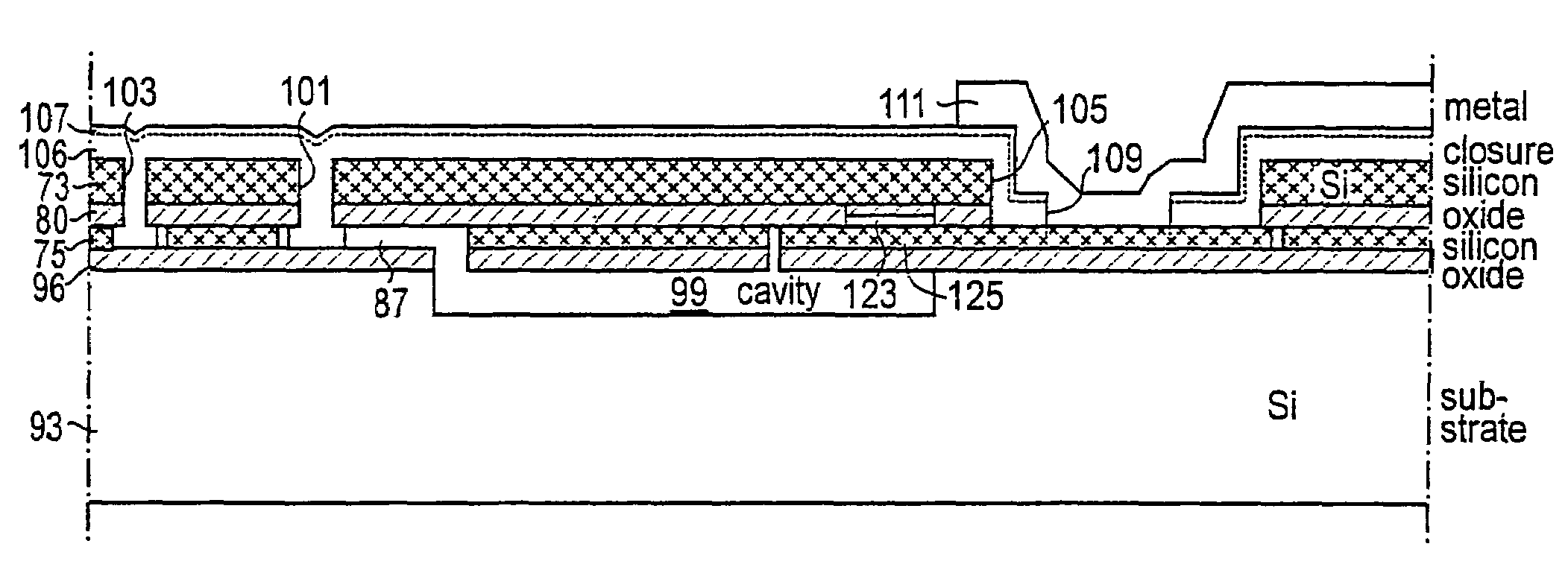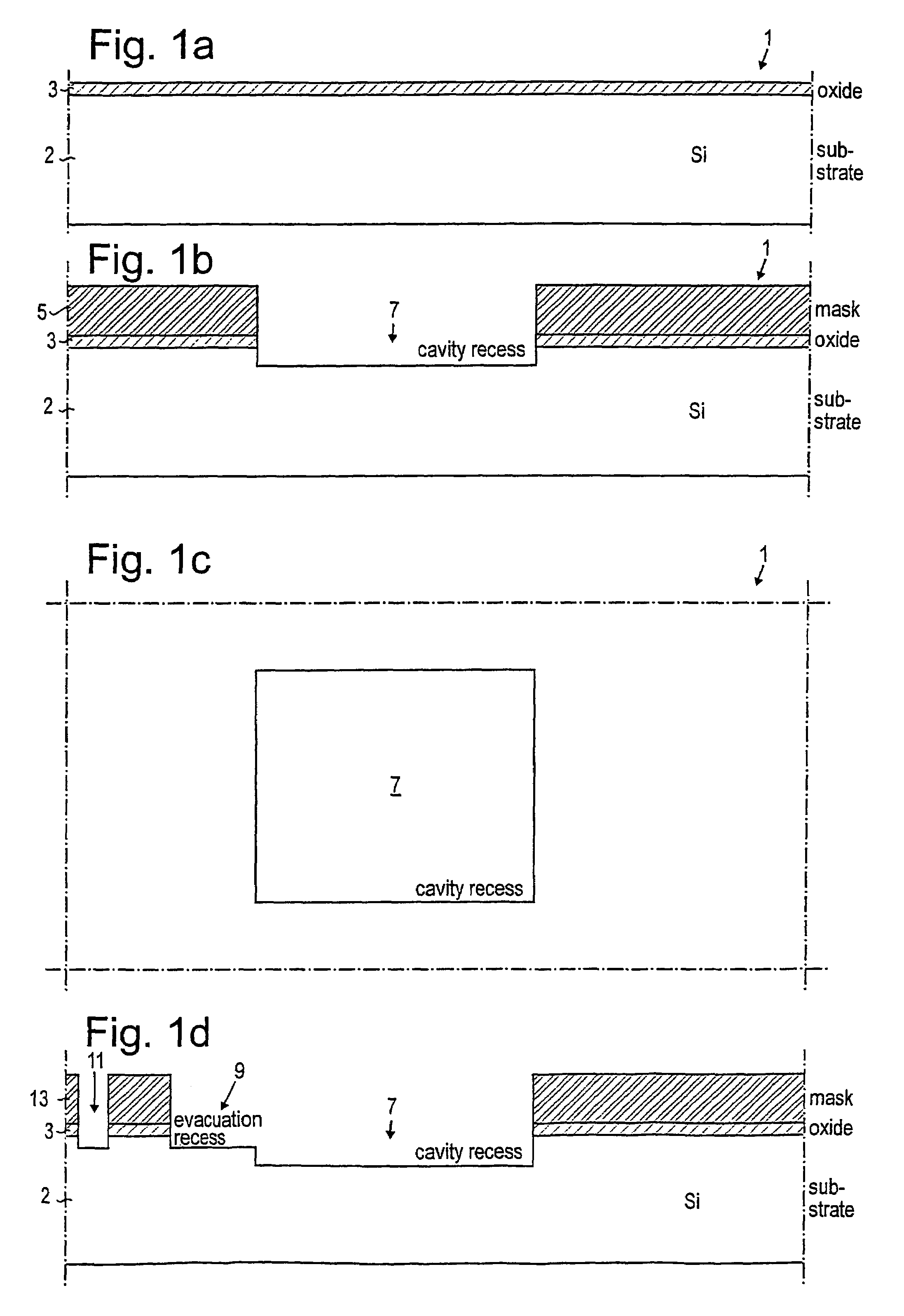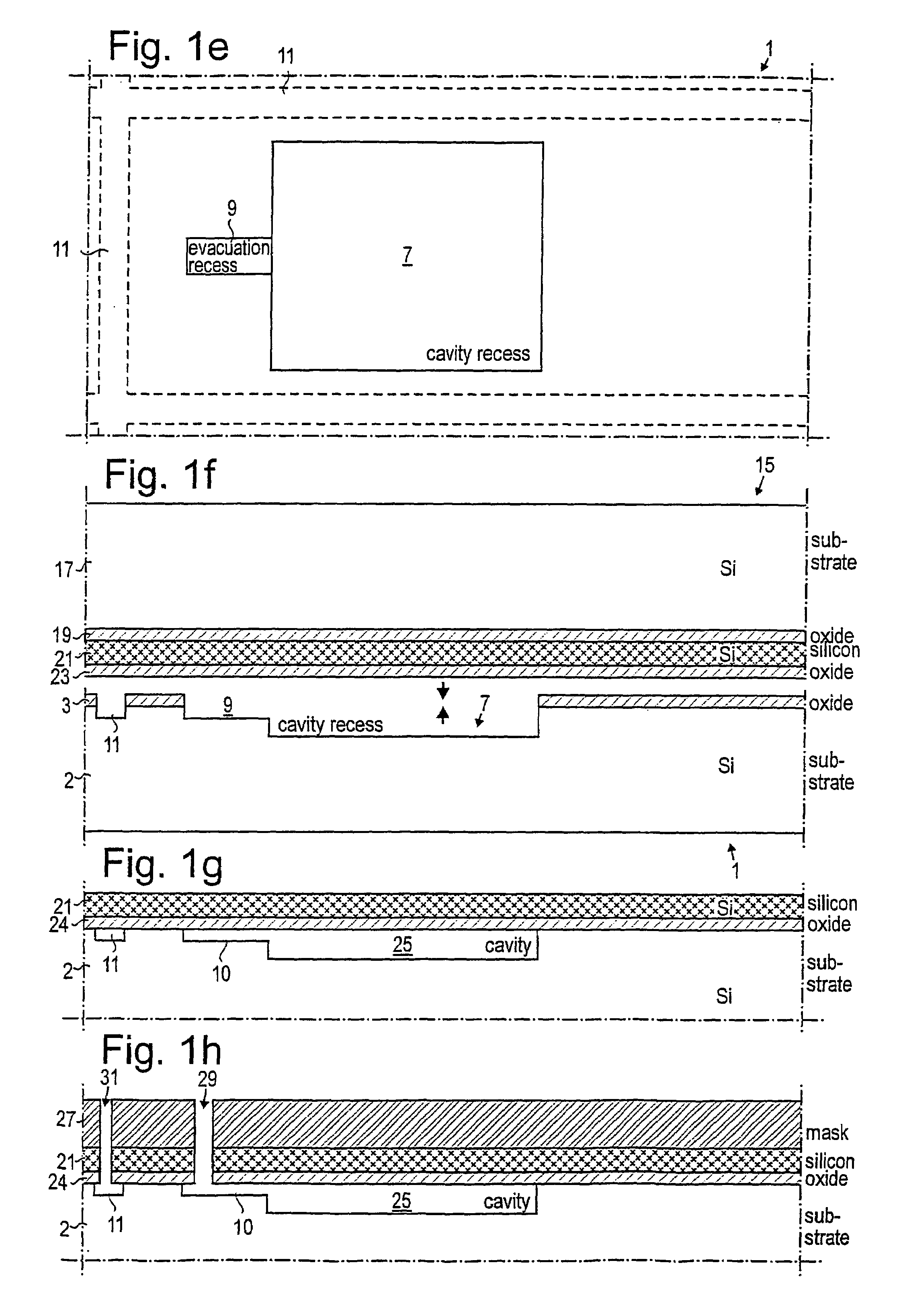Pressure sensor
a pressure sensor and micro-machine technology, applied in the manufacture of electrical instruments, electronic circuit testing, instruments, etc., can solve the problems of high cost of handling the very thin and therefore delicate monocrystalline diaphragm, the inability to use mass fabrication processes, and the temperature sensitivity problem, etc., to achieve accurate control and well-defined thickness, uniform thickness, and constant thickness
- Summary
- Abstract
- Description
- Claims
- Application Information
AI Technical Summary
Benefits of technology
Problems solved by technology
Method used
Image
Examples
Embodiment Construction
[0046]Methods of producing micromachined pressure sensors and the resulting pressure sensors having monocrystalline diaphragms obtained will now be described, the diaphragms in the various alternatives being obtained from an SOI-structure.
[0047]First an embodiment using a single SOI (Silicon On Insulator) structure will be described, this being the simplest alternative. The main advantage of all embodiments is the monocrystalline diaphragm that probably reduces the long-term drift of the sensor characteristics. Also, the monocrystalline structure is more resistive to moisture than other more porous materials such as polysilicon. A general advantage is the very well-defined and uniform thickness of the diaphragms in all embodiments, this giving the diaphragms desired elastic properties.
[0048]In the first embodiment a lower structure 1 is first produced by processing a silicon substrate such as a wafer 2, see FIG. 1a. A multitude of identical structures is produced in the following pr...
PUM
| Property | Measurement | Unit |
|---|---|---|
| pressure | aaaaa | aaaaa |
| electrically conducting | aaaaa | aaaaa |
| conducting | aaaaa | aaaaa |
Abstract
Description
Claims
Application Information
 Login to View More
Login to View More - R&D
- Intellectual Property
- Life Sciences
- Materials
- Tech Scout
- Unparalleled Data Quality
- Higher Quality Content
- 60% Fewer Hallucinations
Browse by: Latest US Patents, China's latest patents, Technical Efficacy Thesaurus, Application Domain, Technology Topic, Popular Technical Reports.
© 2025 PatSnap. All rights reserved.Legal|Privacy policy|Modern Slavery Act Transparency Statement|Sitemap|About US| Contact US: help@patsnap.com



